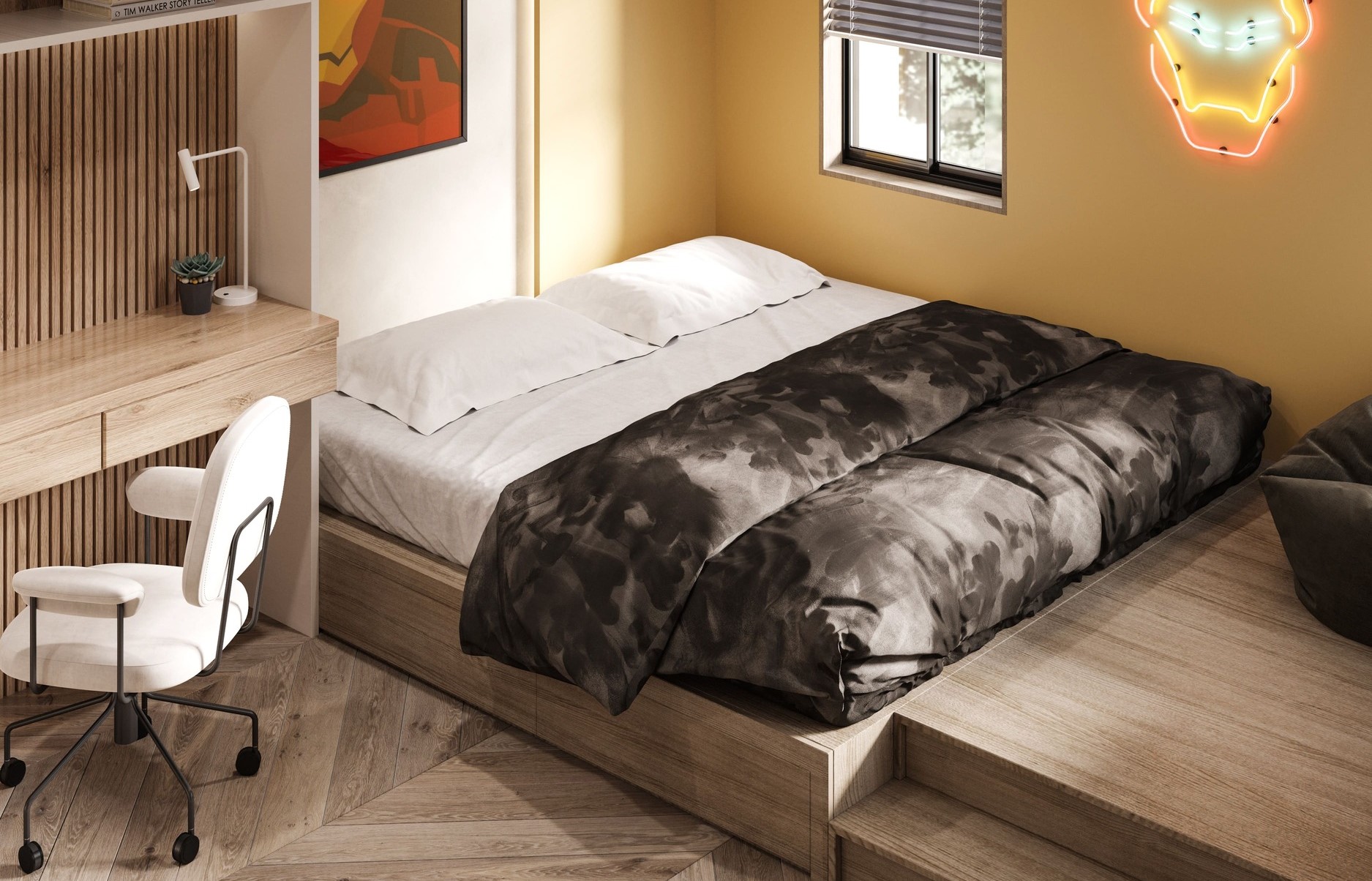Animating Retail: The Transformative Power of 3D Product Animations
Introduction to 3D Product Animations in Retail
The advent of 3D product animations in retail marks a significant departure from conventional marketing and product display techniques. Unlike static images, 3D animations offer a lifelike, interactive portrayal of products, enabling customers to visualize items in motion and from every angle. This enhances the product's attractiveness and provides a more comprehensive understanding of its features, functionality, and scale. The use of 3D animations is particularly effective for products where design, intricate details, and functionality are crucial purchasing factors, such as electronics, apparel, and furniture.
The integration of 3D animations into retail is driven by advancements in 3D rendering technologies and software, making it more accessible and cost-effective for businesses to create high-quality animations. Companies leveraging this technology report significant improvements in customer engagement metrics, including increased time spent on-site, higher conversion rates, and reduced product return rates. This shift towards 3D product visualization reflects a broader trend in digital commerce, where interactive and immersive content is critical to attracting and retaining customers in a highly competitive online marketplace.
The Impact of 3D Animations on Consumer Engagement
Enhancing Product Visualization and Interactivity
The core advantage of 3D product animations lies in their ability to enhance product visualization significantly. By presenting products in a dynamic, rotating view, animations allow consumers to fully understand the product's design, texture, and functionality. This level of interactivity is not possible with traditional photography and can be especially beneficial for complex products that require assembly or have multiple use cases. For instance, 3D animations of furniture can show how a piece can be transformed or assembled, providing practical insights that can influence purchasing decisions.

Image from Yousee Studio
Furthermore, 3D animations tap into the human brain's preference for visual information, making it easier for customers to remember and recall products. This visual appeal, combined with interactive elements like zooming and rotating, significantly increases user engagement. Studies have shown that products with 3D animations tend to capture users' attention for extended periods, increasing the likelihood of conversion. The interactive nature of 3D animations encourages users to explore products more thoroughly, leading to a deeper emotional connection and a greater sense of ownership, even before the purchase is made.
Influencing Purchasing Behavior
The immersive experience provided by 3D animations influences consumer purchasing behavior by reducing the ambiguity and uncertainty often associated with online shopping. When customers can explore a product in detail and from all angles, they are more confident in their understanding of the product, which reduces the perceived risk of online purchases. This confidence is crucial in online retail, where the inability to interact with products physically can be a significant barrier to purchase.
Moreover, 3D animations can effectively highlight product features and benefits that might be difficult to convey through text or static images. For example, the durability of a product, the softness of a fabric, or the water-resistant properties of a watch can be effectively demonstrated through animation, providing tangible value propositions that resonate with consumers. This enhanced product presentation can lead to higher conversion rates, as consumers are more likely to purchase a product when they fully understand its features and benefits.
In conclusion, the impact of 3D animations on consumer engagement and purchasing behavior is profound. By offering an interactive, immersive, and informative product visualization experience, 3D animations captivate consumers and empower them to make informed purchasing decisions confidently. As we continue to explore the technical intricacies of integrating these animations into online platforms, it's clear that 3D product animations represent a significant leap forward in the evolution of digital retail, offering a glimpse into the future of online shopping where interactivity and immersion are paramount.
Integrating 3D Animations into Online Platforms
Integrating 3D animations into online retail platforms is a multifaceted process that requires careful planning and execution to ensure seamless user experiences across various devices and internet speeds. The first step involves the creation of 3D models of the products, which are then animated to showcase the products' features, functionality, and possible customizations. This requires sophisticated 3D modeling and animation software, such as Autodesk Maya, 3ds Max, or Blender, which allows designers to create detailed and lifelike animations that accurately represent the physical products.

Image from Yousee Studio
Once the animations are created, they must be optimized for web use. This involves reducing the file size without significantly compromising the quality to ensure quick loading times and smooth playback on the online platform. This optimization is crucial because large file sizes can lead to slow loading times, negatively impacting the user experience and potentially increasing bounce rates. Techniques such as compression, using lower polygon counts for models, and optimizing textures are commonly employed to achieve this balance.
The next step is to integrate these animations into the eCommerce platform. This often involves working with web developers to embed the animations in a way that complements the existing website design and layout. The animations should be easily accessible within the product pages, ideally with options for the user to control the playback, such as play, pause, and rewind, to facilitate interaction. Moreover, ensuring the animations are responsive and adaptable to different screen sizes and resolutions is essential, providing a consistent experience across desktops, tablets, and smartphones.
Ensuring compatibility across different browsers and devices is another critical aspect of the integration process. Given the variety of browsers and devices consumers use, the animations must be tested extensively to ensure they perform consistently across all potential user environments. This may involve cross-browser testing tools and adjustments to the animations and their embedding code to address compatibility issues.
Challenges and Considerations in Adopting 3D Product Animations
Adopting 3D product animations in retail comes with challenges and considerations, ranging from technical requirements to cost implications. One of the primary challenges is the need for significant technical expertise and resources to create high-quality 3D animations. This often necessitates hiring skilled 3D artists and animators, which can be a substantial investment for many businesses and small to medium-sized enterprises.
The technical infrastructure to support 3D animations is another critical consideration. High-quality 3D animations require substantial computing power for both creation and hosting, which can necessitate upgrades to existing hardware and software systems. Additionally, ensuring that the online platform can smoothly display these animations without lagging or crashing is essential, which may require enhancements to the website's backend systems.
Another challenge is the potential increase in website load times due to adding 3D animations. As mentioned, optimizing the animations for web use is crucial to mitigate this issue. However, achieving the perfect balance between quality and performance can be complex and time-consuming. Moreover, businesses must also consider the impact on mobile users, who may have limited data plans, making it essential to offer options to control the playback of animations to avoid excessive data usage.
The ongoing maintenance and updating of 3D animations can also pose challenges, particularly for businesses with extensive product ranges or frequent product updates. Each new product or product variation may require the creation of a new 3D animation, which can be resource-intensive. Developing a streamlined process for updating and maintaining these animations is essential to ensure the long-term viability of incorporating 3D animations into the retail strategy.
In conclusion, while integrating 3D animations into online retail platforms offers numerous benefits in terms of enhancing product presentation and consumer engagement, it also presents a range of challenges that businesses must carefully navigate. By understanding these challenges and planning accordingly, businesses can effectively leverage the transformative power of 3D product animations to elevate their online retail experience and connect with consumers in more dynamic and interactive ways.
Case Studies: Success Story of 3D Animations in Retail
To truly understand the transformative power of 3D product animations in retail, it is insightful to examine real-world success stories that highlight this technology's practical applications and benefits. One notable example is the global furniture giant IKEA, which has effectively utilized 3D animations to enhance its online catalog. Using detailed 3D models and animations, IKEA customers can explore furniture features, view products from multiple angles, and visualize how the furniture fits into their living spaces. This innovative approach has improved the online shopping experience and reduced the rate of product returns, as customers have a clearer understanding of what they are purchasing.

Image from Yousee Studio
Conclusion
Integrating 3D product animations into retail represents a significant shift towards more immersive and interactive online shopping experiences. By allowing customers to engage with products dynamically and in detail, 3D animations can transform the traditional retail landscape, offering a level of personalization and visualization previously unattainable.
However, as businesses consider adopting this technology, they must also be mindful of the challenges involved, including the technical expertise required, the potential impact on website performance, and the ongoing maintenance of 3D content. Despite these challenges, the success stories of businesses that have effectively implemented 3D animations highlight the potential for significant returns regarding enhanced customer engagement, reduced return rates, and increased sales.
As we move forward, the continued evolution of 3D rendering technologies and the increasing demand for interactive and personalized online shopping experiences suggest that 3D product animations will play an increasingly important role in the retail industry. For businesses willing to invest in this technology, the opportunity to differentiate themselves in a competitive market and forge deeper connections with their customers is immense, heralding a new era of animating retail that is as dynamic as it is transformative.
Contact us at YouSee Studio for captivating 3D renderings and immersive virtual experiences.
Karen Spacey is a content writer and the author of this article.




